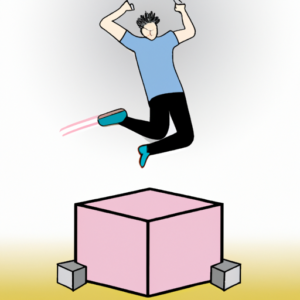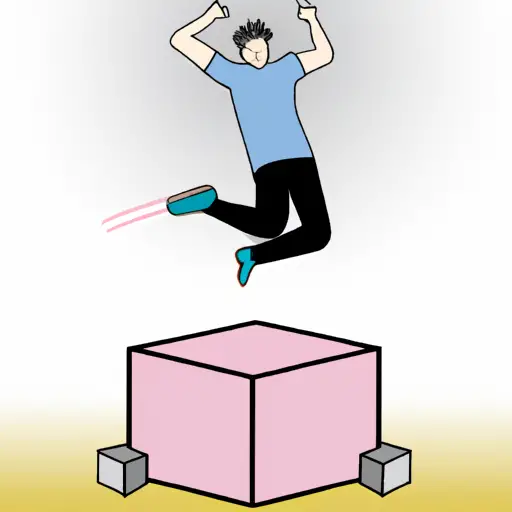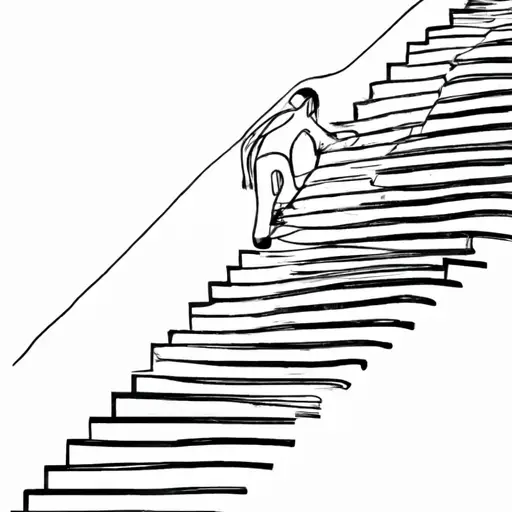Unlock Greater Power with Plyometrics
Get Explosive with Plyometrics!
Hey there fitness enthusiasts, are you looking for a new way to push your limits and achieve explosive power? Well, look no further than plyometric exercises! Plyometrics, or “plyos” for short, involve rapid, explosive movements that activate your fast-twitch muscle fibers to increase your strength and power.
Benefits of plyometrics include improved agility, speed, and jump height, making them popular among athletes. However, they can benefit anyone looking to improve their overall fitness.
So, what are some types of plyometric exercises you can try? Jump squats, burpees, and box jumps are just a few examples of exercises that can be incorporated into your routine. These exercises require maximal effort in a short amount of time, making them an efficient way to add intensity to your workouts.
Before diving into plyometrics, it’s essential to know how to incorporate them into your routine properly. Start with low-impact exercises to gradually build up your strength and avoid injury. As you progress, gradually increase the intensity of your exercises to continue challenging yourself.

Like with any exercise, there are common mistakes to avoid when doing plyometrics. Not warming up properly, focusing too much on speed, and doing too many repetitions are some of the most frequent issues. Be sure to take your time and listen to your body to avoid these missteps.
In conclusion, plyometrics can be a fun and effective way to take your fitness routine to the next level. Incorporate low-impact exercises and gradually ramp up the intensity to avoid injury and maximize your results. So, get ready to explode with power and try some plyometric exercises today!
Get Ready to Bounce: Types of Plyometric Exercises
Jump training is not just for athletes anymore. It is an effective way to build muscle strength, power, and agility. There are many different types of plyometric exercises that can be incorporated into your workout routine. Here are some of my favorite options:
Jump Squats
Jump squats are a great way to improve leg power and explosive strength. Start by standing with your feet shoulder-width apart and lower into a normal squat. When you reach the bottom of the squat, explosively jump up and land back into the starting position. Repeat the movement for 10-15 reps.
Burpees
Burpees are a full-body exercise that can help develop strength, endurance, and explosiveness. To perform a burpee, start in a standing position. Then, drop to the floor, do a push-up, jump back up, and return to standing position. Repeat the movement for 10-15 reps.
Box Jumps
Box jumps are an excellent plyometric exercise that targets the lower body. Find a sturdy box and stand facing it. Jump onto the box with both feet and land in a squat position. Step back down one foot at a time and repeat for 10-15 reps.
It is essential to understand that plyometric exercises should be incorporated progressively into your workout routine. Avoid overtraining the same muscle groups by giving them time to recover. Not warming up properly, focusing too much on speed, and doing too many repetitions are common mistakes to avoid. Remember to start with low-impact exercises and increase the intensity gradually.
How to Incorporate Plyometrics into Your Workout
Hey there, it’s time to talk about how to add plyometrics into your workout routine! You might be thinking, “What is plyometrics, exactly?” Well, it’s a type of exercise that uses explosive movements to build power and speed. It can be a challenging workout, but the benefits are worth it.
So, how do you get started with plyometrics? First, start with low-impact exercises, such as jumping jacks or low box jumps. This will help you build up your strength and coordination.
Next, gradually increase the intensity of your plyometric exercises. You don’t want to push yourself too hard too fast and risk injury. Remember to listen to your body and take breaks as needed.
It’s also important to warm up properly before doing plyometrics. You want to make sure your muscles are ready for the explosive movements. A good warm-up should include stretching and some light cardio.
Finally, don’t get too caught up in doing a lot of repetitions. Plyometrics is all about quality, not quantity. Focus on doing each exercise correctly and with good form.
Now that you have some tips on how to incorporate plyometrics into your workout routine, why not give it a try? Remember, the benefits include building power and speed. For more information on plyometrics, check out this resource: https://lovelylifeofleah.com/boost-speed-and-power-with-plyometrics-training/
Common Mistakes When Doing Plyometrics
Hey there, fitness enthusiasts! Plyometrics is an excellent way to build strength, endurance and agility, but mastering the exercises can be tricky. In this section, I’m going to share some of the most common mistakes people make when doing plyometrics and how you can avoid them.
Not Warming Up Properly
One of the biggest mistakes people make when doing plyometrics is not warming up properly. You need to warm up your muscles and joints before jumping into the high-intensity exercises. Skipping the warm-up can increase your risk of injury and reduce your performance. Spend at least 10 minutes warming up with some light jogging, jumping jacks, and stretching. This will prepare your body for the workout ahead.
Focusing Too Much on Speed
Another common mistake when doing plyometrics is focusing too much on speed. Plyometrics isn’t just about how fast you can go; it’s about control and proper form too. Many people sacrifice form for speed, which can lead to injuries, especially in the knees and ankles. To avoid this mistake, focus on keeping proper form throughout each exercise, even if it means slowing down a little.
Doing Too Many Repetitions
It’s essential to push yourself to improve when doing plyometrics, but doing too many repetitions at once is a mistake. Plyometric exercises are high-intensity, and doing too many repetitions without proper rest can lead to fatigue and injuries. It’s recommended to start with a few repetitions and gradually increase as you build your endurance. Rest between sets is also crucial to avoid exhaustion and overtraining.
Let’s be honest; master plyometrics requires practice and patience. But, avoiding these common mistakes will help you get the most out of your workout while minimizing the risk of injury. Keep in mind that warming up properly, focusing on form instead of speed, and gradually increasing the intensity will maximize your results. Good luck on your journey, and don’t forget to have fun with it!
Conclusion: The Lowdown on Plyometrics
Alright, folks, that’s all she wrote. We’ve covered a lot of ground here when it comes to plyometrics, or “plyos” as they’re sometimes called. From defining what plyos are, to outlining the different types of exercises you can do, to providing tips on how to incorporate them into your workouts, I hope you feel like you’ve gotten a solid introduction to this type of training. Now, let’s talk about why you should bother with plyometrics in the first place. As we’ve discussed, there are a ton of benefits to doing these types of exercises. Not only can they improve your explosive power, speed, and agility, but they can also help prevent injuries and encourage better overall body awareness. Plus, plyos can be a fun and challenging addition to any workout routine. Of course, as with any new form of training, there are also some potential pitfalls to be aware of. We’ve talked about some common mistakes people make when doing plyos, including not warming up properly and doing too many repetitions. But as long as you approach these exercises thoughtfully and gradually increase the intensity over time, you should be able to reap the benefits without putting yourself at risk. Overall, I’d definitely recommend giving plyometrics a try if you’re looking for a way to switch up your routine and challenge yourself in new ways. Just be sure to listen to your body, start slow, and have fun with it!






